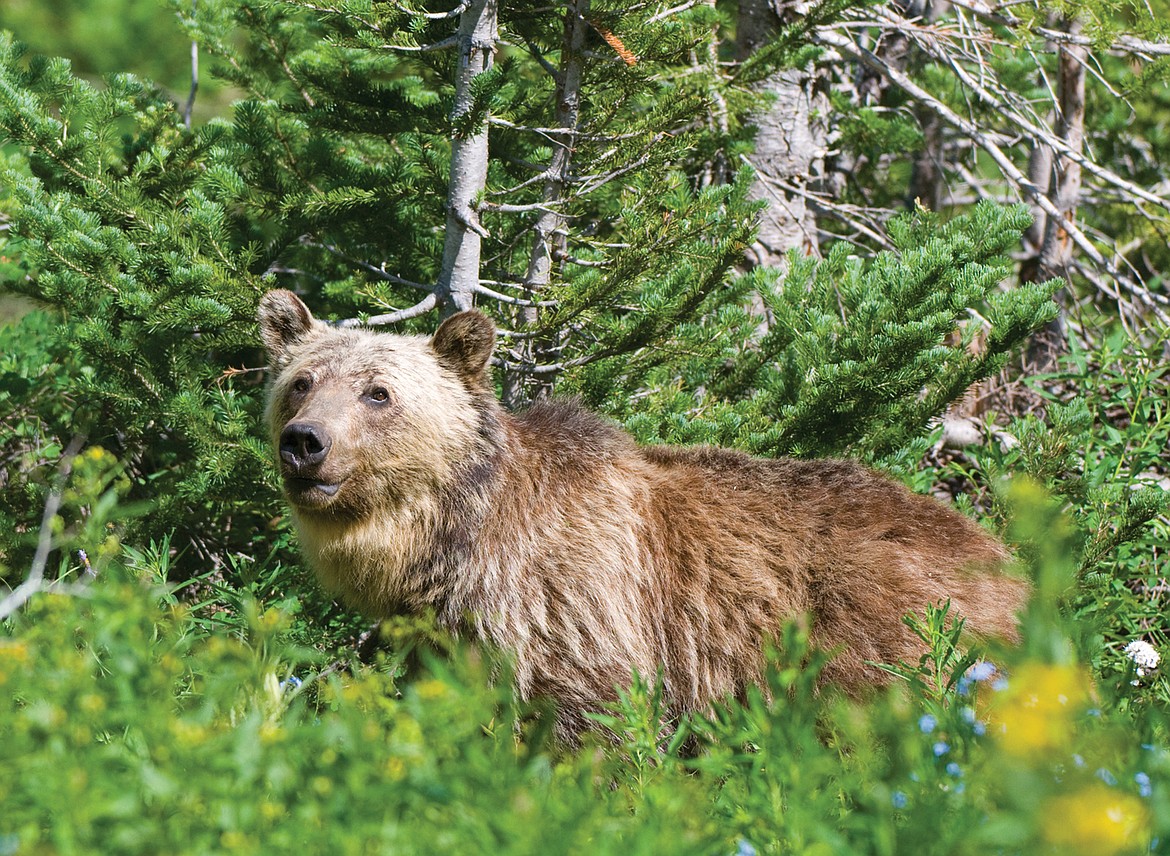Governor’s council updates grizzly report
The Governor’s Grizzly Bear Advisory Council has updated its draft recommendations for addressing grizzly bear management and conservation statewide.
Two versions of recommendations, published on July 17 and 24, were open to public comment until Aug. 4. The proposals were developed after 13 public meetings were held across the state, dating back to the fall of 2019.
The council, made up of 18 residents appointed by Gov. Steve Bullock, is expected to deliver its final report by the end of August.
In the opening of their latest draft recommendations, council members envisioned “fully recovered grizzly populations” in the four Montana recovery zones: the Northern Continental Divide, the Greater Yellowstone, the Bitterroot and the Cabinet-Yaak regions. This can be achieved while “maintaining the safety and quality of life of those that live, work and play in Montana,” according to the council.
As part of their suggestions for education and outreach, the advisory council recommended the establishment of an annual celebration for grizzly bear awareness.
The council encouraged Fish, Wildlife and Parks and other agencies to promote information about hunting safely in bear country, using non-lethal methods to haze grizzlies and for avoiding confrontations with bears.
To increase the public’s knowledge of grizzly bears, the advisory council recommended funding a full-time bear education coordinator position. A coordinator would be responsible for creating and maintaining a statewide bear awareness program and tasked with working with educators to create a public school grizzly bear curriculum.
The council members also urged the state legislature and FWP to make bear management specialists full time positions. The members argued that this would allow managers to transfer experience to successors, improve response time to bear conflicts and expand outreach.
The council members said they had not reached a consensus on the role hunting should play in grizzly management. The draft recommendations did include measures protecting dependent cubs and females caring for young cubs from hunting. The drafts envisioned scheduling seasons for early spring and late fall to reduce the number of female bears taken by hunters. License fees for grizzly hunts should be modeled on moose, bighorn sheep and mountain goats, according to the council members, with the nonrefundable drawing fee going to bear management and conservation.
To help prevent bear and human conflicts, the council advised developing consistent food storage requirements and providing bear-proof infrastructure across public lands.
As for managing bear migration, the council suggested that the governor’s office work with the Montana Department of Transportation and the Federal Railroad Administration. These partnerships could identify important grizzly bear crossing points on major highways, seek funding to incorporate wildlife passages into road networks and minimize train and bear collisions.
Lack of resources remains the biggest obstacle in achieving the goals outlined in the draft.
“The council recognizes that current grizzly bear management and conservation resources are inadequate,” the members stated in the draft. “Addressing these resource challenges will require a multi-pronged and long-lasting approach and needs to include public, private and philanthropic efforts.”
Council members noted that some of the most pressing resource needs are a greater diversity of funding sources, an increase in FWP staff and additional public relation efforts to promote grizzly bear conservation and management.
To remedy these needs, the council suggested tapping a portion of existing tax revenue or accessing tourism related dollars. By partnering with national entities, state agencies could also create a federally appropriated grizzly bear conservation fund. Other recommendations included exploring fundraiser ideas and continuing the $1.38 million federal appropriation in 2020 to employ nonlethal conflict specialists at Wildlife Services in Montana and other states.
Since July 2019, the council has received over 16,000 public comments on their recommendations. Lincoln County residents who responded to the draft were primarily concerned about bear and human contact on the Pacific Northwest Trail.
Rick Bass, of the Yaak Valley, urged council members in February to recommend legislation that would reform the trail.
“More than 26 miles of highest-quality designated core habitat is bisected, with negative consequences for bears, hikers, while failing almost completely to offer any support for Lincoln County’s attempts at diversifying its economy,” Bass said.
Some Lincoln County residents asked the council members in March to consider the strain that reintroduced bears could place on those living in the area.
Others, though, requested that the advisory council help support the small grizzly population in the Cabinet-Yaak region, arguing that locals and bears can and have learned to live together. In his statement, Tony Johnson, who was born in Libby in 1953, told council members in February that he had lived near the Yaak River for over a decade without bear problems.
“My point is we can coexist with grizzlies,” Johnson said. “I am very proud to live in an area that has grizzlies, wolves, wolverines, lynx and all the other creatures that we share our lands with.”

